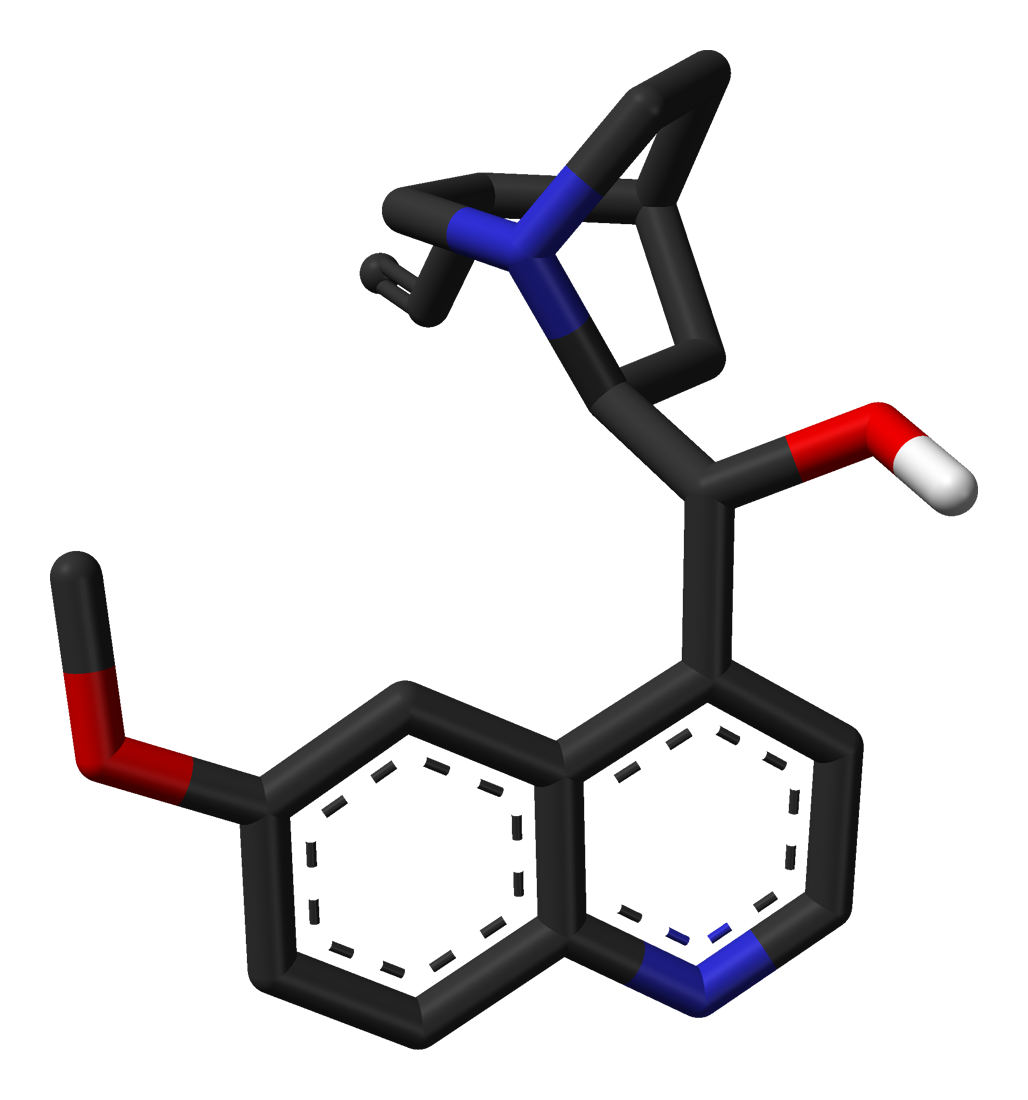Quinine before World War I: Discovery and Use
The story of quinine starts with two legends. One legend involves a fevered missionary in South America who drank from a pool containing tropical plants and tree bark and found his fever reduced. The second legend involved the lady Ana de Osorio who was cured of a fever by drinking tea made from bark. The cure quickly became famous under the name of the Powder of the Countess, Polvo de la Condesa. Later the bark was renamed and distributed by the Jesuits across Spain, Europe, and across the world.
Regardless of the legends, the therapeutic benefit of cinchona bark tea was great enough to attract scientific attention by the early 1800s. An active search of the febrifuge principle was conducted. In 1779, Buguet and Cornette extracted "an essential salt and earthly matter." In 1790, Antoine Fourcroy mentioned the presence of a "coloring matter" that was later found to be chinchona red, associated with the active febrifuge principle in the quinquina and the bitter taste. After its first isolation in 1820 by Caventou and Pellier, the competition to synthesize quinine was fierce in Europe. An important reason for this quest was the colonial power in Africa.
To maintain its colonial control in Africa, where malaria is prevalent, Europe had to find a solution for the quinine shortage. In 1854, Adolph Stecker found the molecular formula of quinine. Paul Rabe discovered the structure of quinine in 1907. Woodward and Doering first synthesized quinine in 1944.
By the time of the Niger, Tshadda, and Binuë Exploration, led up these rivers by Thomas Hutchinson in the 1850s to assess the prospects for trade, quinine was in daily use by the explorers. In 1854, Dr. Bryson proposed that quinine be taken before the malaria fever started, "striking a blow at the virulence of malaria."
Quinine is associated with the side effect of blackwater fever, a complication of malaria caused by Plasmodium falciparum. Blackwater fever can be lethal and is characterized by blackish/reddish urine, jaundice, fever, and headache. It can occur when the lysis of the red blood cells releases the hemoglobin in the urine, causing, in many cases, renal failure.
 CLOSE SIDEBAR
CLOSE SIDEBAR
